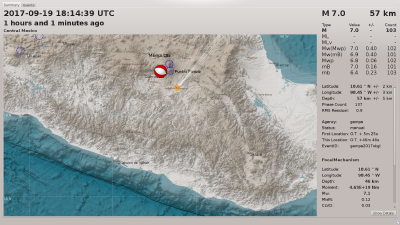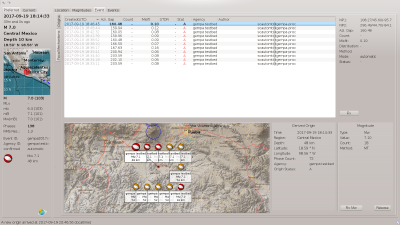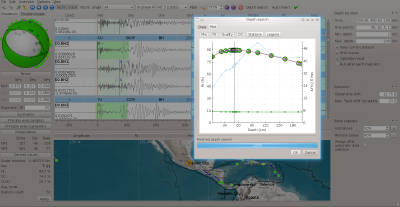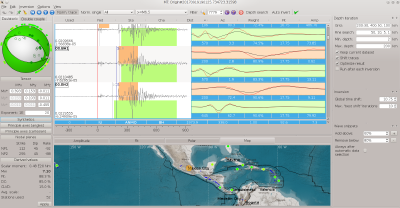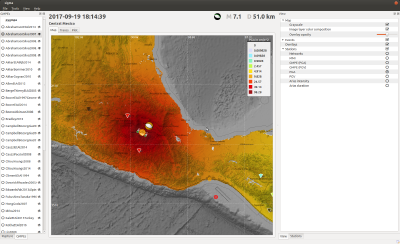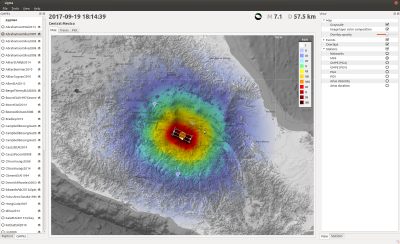The strong M7.1 earthquake close to Mexico City on 19 September 2017
Sep 19, 2017
Categories:
Earthquake
The strong M7.1 earthquake near Mexico City is likely to cause severe damage. The event was fully automatically detected and located by our automatic SeisComP3 system only 5 minutes and 21 seconds after the event occurred. Like the M8.1 quake just a few days ago on 08 September 2017 this new event shows normal faulting. The mechanism can be easily and uniquely determined by inverting body, surface and W-phase waves. The centroid seems to be located at around 50 km depth. Here we are using our AUTOMT and MTV modules. The AUTOMT module has automatically determined the earthquake source mechanism only 16 minutes after the event. High peak ground acceleration (PGA) and seismic intensities (MMI) are predicted by modeling using our new SIGMA module for Seismic Intensity and Ground Motion Analysis.
Standard SeisComP3 modules were employed for automatic detection, location and magnitude calculation. Additionally, P and S phases and first motion polarities were manually picked, the event was relocated and the magnitude was determined in scolv.
AUTOMT, the fully automatic module for 3D centroid moment tensor inversion (CMT) delivered a very rapid solution. While the event was still automatically processed, a detailed manual MT analysis was performed by means of our very user friendly and interactive MTV.
Our new SIGMA module for Seismic Intensity and Ground Motion Analysis was used to model and to predict the strong ground motions expected and observed for this earthquake.
